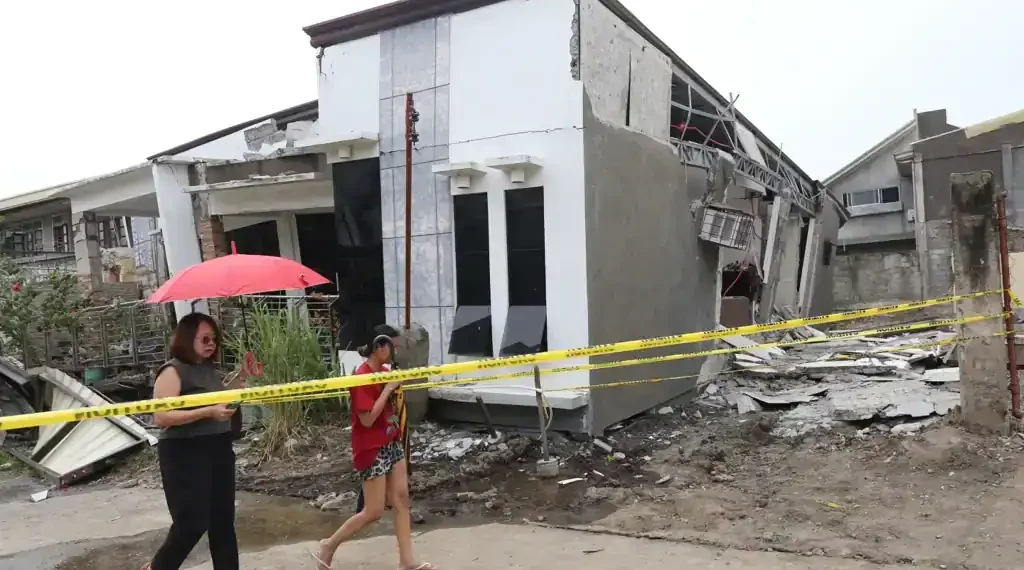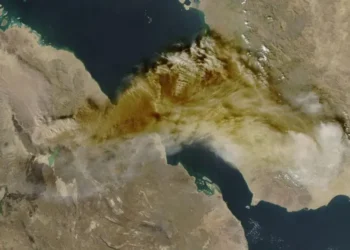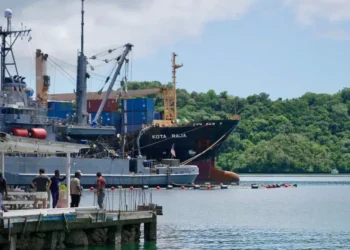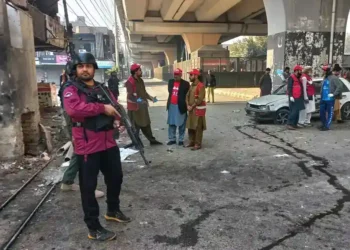Twin Earthquakes Hit Southern Philippines, Killing Seven and Causing Widespread Damage
Published: October 10, 2025, 23:30 EDT
Two Major Quakes Rattle the Southern Philippines
Two powerful offshore earthquakes struck southern Philippines hours apart on Friday, killing at least seven people, setting off landslides, and prompting mass evacuations amid tsunami warnings. The tremors, which originated off the coast of Davao Oriental, were among the strongest to hit the region this year.
The Philippine Institute of Volcanology and Seismology (Phivolcs) reported that the first quake, measuring magnitude 7.4, occurred around 43 kilometers (27 miles) east of Manay town. A second tremor, magnitude 6.8, followed several hours later in nearly the same area.
Separate but Related Quakes Along the Philippine Trench
Phivolcs Director Teresito Bacolcol confirmed that both earthquakes were triggered by movements along the Philippine Trench, a deep-sea fault line known for producing strong seismic activity.
“The second one is a separate earthquake, which we call a doublet quake,” Bacolcol told the Associated Press. “Both happened in the same area but have different strengths and epicenters.”
He added that the second nighttime quake may have further weakened structures already damaged by the earlier one, raising fears of additional collapses or landslides.
At Least Seven Dead and Hundreds Injured
Authorities confirmed that at least seven people were killed as a result of the first earthquake. Two hospital patients in Davao Oriental reportedly died of heart attacks during the tremor, while one resident in Mati City was fatally struck by falling debris.
Three miners were also killed and several others injured in a landslide triggered by the quake in Pantukan, a gold-mining village in Davao de Oro province. Another fatality was reported in the port city of Davao, where hundreds sustained injuries from falling debris and collapsing walls.
“The scale of destruction is extensive, and we are still conducting search and rescue operations,” said Ednar Dayanghirang, regional director of the Office of Civil Defense (OCD) for Davao Region.
Widespread Structural Damage Across the Region
Bernardo Rafaelito Alejandro IV, deputy administrator of the OCD, said several buildings sustained visible cracks, including Davao International Airport, though flights continued as scheduled.
Eyewitness Jun Saavedra, a disaster volunteer, described the quake’s intensity: “I was driving my car when it suddenly swayed. Power lines were swinging wildly, and people ran out of buildings as the ground shook violently.”
Saavedra added that several schools suffered damage. “We’ve had earthquakes in the past, but this was the strongest. About 50 students were taken to hospitals for fainting and dizziness after the tremor,” he said.
Schools and Offices Closed, Thousands Evacuated
Local authorities in Davao City, home to around 5.4 million people, suspended classes and government work. In nearby Governor Generoso town—roughly 100 kilometers (60 miles) from the epicenter—all levels of schooling were canceled as a precaution.
Evacuation centers across Davao Oriental and Davao de Oro have since been opened to accommodate displaced residents, according to local government units.
Tsunami Scare Prompts Coastal Evacuations
The Pacific Tsunami Warning Center in Honolulu reported minor sea-level fluctuations along the coasts of the Philippines and Indonesia following the first quake. Although the initial tsunami alert caused panic in several provinces, the warning was lifted roughly two hours later.
Phivolcs confirmed that small waves—measuring only a few centimeters—were detected, and no significant tsunami occurred.
Indonesia’s Meteorology, Climatology, and Geophysics Agency (BMKG) also recorded waves of 3.5 to 17 centimeters (1.3 to 6.7 inches) in North Sulawesi province, affecting several coastal districts.
President Marcos Orders Immediate Disaster Response
President Ferdinand Marcos Jr. ordered the National Disaster Risk Reduction and Management Council (NDRRMC) to assess the damage and mobilize relief efforts. “Rescue teams and relief operations are on standby and will be deployed as soon as conditions are deemed safe,” he said.
The president, who has faced multiple natural disasters in recent months—including typhoons and another deadly earthquake in September—stressed that “saving lives and restoring critical infrastructure” remain the top priorities.
The Philippines’ Seismic and Climatic Vulnerability
The Philippines sits along the Pacific “Ring of Fire,” a region prone to frequent earthquakes and volcanic eruptions due to tectonic activity. On September 30, a 6.9-magnitude quake struck Cebu province, killing at least 74 people and displacing thousands.
The archipelago also experiences an average of 20 typhoons annually, making disaster preparedness a core government function.
Experts say the proximity of populated areas to fault zones like the Philippine Trench and the Cotabato Fault poses a continuous risk of major seismic events.
Regional Impact and Ongoing Monitoring
Authorities warned residents to remain alert for aftershocks, which could continue for several days. Engineers are inspecting bridges, airports, and schools across Davao Oriental and neighboring provinces to assess structural integrity.
Meanwhile, the U.S. Geological Survey (USGS) reported a separate magnitude-6.0 quake off Papua New Guinea on Friday, centered in the Bismarck Sea, roughly 414 kilometers (257 miles) northeast of Lae. No damage or tsunami was reported there.
Relief Efforts Underway
Disaster response teams, including soldiers and civilian volunteers, are assisting in clearing debris and providing first aid. The Department of Social Welfare and Development has started distributing food packs and temporary shelters to affected communities.
Health officials are monitoring hospitals for a possible surge in trauma cases, while local governments are conducting rapid assessments to identify unsafe structures.
This article was rewritten by JournosNews.com based on verified reporting from trusted sources. The content has been independently reviewed, fact-checked, and edited for accuracy, neutrality, tone, and global readability in accordance with Google News and AdSense standards.
All opinions, quotes, or statements from contributors, experts, or sourced organizations do not necessarily reflect the views of JournosNews.com. JournosNews.com maintains full editorial independence from any external funders, sponsors, or organizations.
Stay informed with JournosNews.com — your trusted source for verified global reporting and in-depth analysis. Follow us on Google News, BlueSky, and X for real-time updates.














